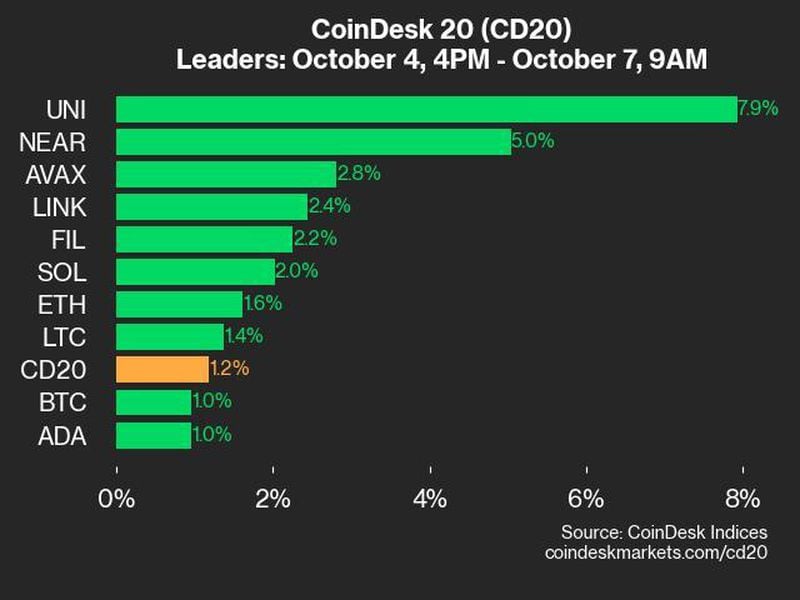How Bitcoin ETFs Are Changing the Risk-Reward Ratio for Institutional Investors
As anticipated, the rollout of spot bitcoin exchange-traded funds (ETFs) in the U.S. market has made a massive positive impact on the digital asset industry. It’s unleashed a stampede of retail investors, and set records for investment into bitcoin (BTC) and into ETFs.
More importantly, being in a product approved by the U.S. Securities and Exchange Commission (SEC) has changed the risk reward ratio for bitcoin, bringing crypto back into the institutional investment conversation. That’s driving new interest from some firms and emboldening others to restart projects that had been put on pause. The door into the mainstream financial system has been reopened.
Note: The views expressed in this column are those of the author and do not necessarily reflect those of CoinDesk, Inc. or its owners and affiliates.
3 dimensions of risk
Institutional investors think about risk in many dimensions, with some being: products, counterparties and the risks around the underlying asset itself. In traditional finance (TradFi), all of these are well understood.
The products have become commoditized, with many firms offering similar products. The counterparties – the market makers, custodians, clearinghouses, etc. that help absorb trading risk are well known. The different asset classes are also well understood and there are time honored ways of evaluating the risks of a particular asset.
Over many years a lot of the risk and volatility has been taken out of the system. It’s black swan type events that create problems. The risk is low but so are the rewards. Opportunities to beat the market are hard to find.
What we’ve seen in crypto is a series of events that have had a negative impact, but are foreseeable given the industry’s lack of regulation and controls. The risk of these events happening has been too high for institutions to go after the outsized rewards.
Reducing the risks
The bitcoin ETFs reduce risk across all three dimensions.
ETFs have been available in the U.S. market for over 30 years. Everyone understands the product. Buying the asset in a securitized product is more straightforward than buying spot bitcoin outright. Many investors feel it’s a better path to pay a management fee to have someone else handle custody, settlement risk, and other operational aspects of trading Bitcoin. They no longer have to take those risks directly.
The presence of big brand names like BlackRock, Fidelity and others reduces counterparty risk. There are plenty of crypto native custodians, liquidity providers and market makers, but they are relatively unknown in the world of TradFi.
The ETFs introduce some of the reliant counterparties within the crypto universe to general investors. Knowing that big TradFi players have done the due diligence on their financials, processes and procedures and security practices reduces the fear factor. Not only that, it shows them who they could go to for help if they wanted to hold bitcoin and other digital assets and do spot trading themselves in the future.
By approving bitcoin as an underlying product within the ETF space, the SEC has reduced risk at the base level of the asset – namely, the fear that crypto could be entirely banned in the U.S., obviously greater regulatory clarity could reduce asset risk further, but market demand for ETFs has pushed the agency to settle some important questions. It has also pushed ETF issuers to put in place many of the plain vanilla elements that reduce risk that institutional players expect to see.
All of these elements create trust in the market, which is crucial for resuming digital assets’ journey into the mainstream. There’s a lot of ideology, jargon and technical terms surrounding crypto. But essentially it’s just another asset class that uses a different technology.
Prior to FTX, a lot of people put those risks aside and focus on price appreciation and gaining access to the market. Post FTX, people are saying, I want to be involved, but I need to know I’m protected at a basic level. The ETFs do that, while exposing institutional investors to the reliant counterparties in crypto. They’ve put the industry back on a positive track.
There are two things keeping institutions away from digital assets right now. One is philosophical. They don’t believe in or like Bitcoin or crypto. Then there is a second camp for whom the risk/reward ratio still isn’t attractive enough. For these people, the success of the ETFs is making it increasingly difficult to sit on the sidelines, especially when clients are asking for crypto products.
The day will come where the main risk with Bitcoin and other digital assets is at the base level of asset performance – just as it is in TradFi. It isn’t going to be one ruling or one product that magically makes it happen. It’s going to be a long process, but eventually all the questions about products and counterparties and regulations will fade away.
The only question will be, do you want to invest in digital assets, or not?
Edited by Daniel Kuhn.









